Antique Map of America -- California as an Island -- First Credible Naming and Depiction of the Missouri River
Nice old color example of Allard's rare map of America, with a small inset of New Zealand, California as an island, and an unusual land bridge connecting the Northwest Coast of America with Japan.
The treatment of the Strait of Anian is very unusual, with only the narrowest passage toward the otherwise undelineated northwest passage and an equally limited number of places in Button's Bay and Baffins Bay allowing for a transit from the Atlantic to the Pacific by water.
Another curious feature of the map is the "R. Massourite," a bold early depiction of the Missouri River. While its course is well south of the true course of the Missouri, the map would seem to be the first to both show and name the river in a form of its current name. The depiction of the course of the river derives from Chrestien Le Clerc's 1691 Carte de la Nouvelle France . . . , which does not name the river. The name Massourite would seem to derive from the Massourite Village and a short Osage River appear on the Nolin and Coronelli maps from the prior decade, which is generally shown below the confluence of the Missouri and the Mississippi Rivers. The river is called the Pekitanoni River on De L'Isle's map of 1700 of North America and it would appear that it was not until De L'Isle's 1703 Carte Du Mexique et de la Floride that the name "Missouris" is attached to the river.
Allard's map includes one of the boldest depictions of the myth of Terra Esonis, a land bridge extending from Japan to the Straits of Anian. California is shown as an Island, based upon Sanson's second projection. The open ended Great Lakes (based upon Sanson) and primitive early treatment of the Mississippi River are also noteworthy, as is the early Rio Colorado, extending to a lake in Apaches and Navajo regions of the Southwest, and mistakenly referencing Taos and Xila, indicating a confusion with the Rio Grande regarding the Taos reference. The interior of South America includes tribal vignettes in Brazil and a misprojected, overly wide projection of the continent.
Terrae Esonis, which connects the Straits of Anian to Japan, includes over a dozen place names, one the boldest renditions of this myth.
Quiri Regio, the Northern parts of what would become Australia, are also well delineated, showing what would become Carpentaria, the Gulf of Carpentaria and Arnham's Land. A massive island of Isabella appears above Australia. Several early place names and islands are also shown.
The popular misconception of California as an island can be found on European maps from the sixteenth through the eighteenth centuries. From its first portrayal on a printed map by Diego Gutiérrez, in 1562, California was shown as part of North America by mapmakers, including Gerardus Mercator and Abraham Ortelius. In the 1620s, however, it began to appear as an island in several sources. While most of these show the equivalent of the modern state of California separated from the continent, others, like a manuscript chart by Joao Teixeira Albernaz I (ca. 1632) now in the collection of the National Library of Brasil shows the entire western half of North Americas as an island.
The myth of California as an island was most likely the result of the travel account of Sebastian Vizcaino, who had been sent north up the shore of California in 1602. A Carmelite friar, Fray Antonio de la Ascensión, accompanied him. Ascension described the land as an island and around 1620 sketched maps to that effect. Normally, this information would have been reviewed and locked in the Spanish repository, the Casa de la Contratación. However, the manuscript maps were intercepted in the Atlantic by the Dutch, who took them to Amsterdam where they began to circulate. Ascensión also published descriptions of the insular geography in Juan Torquemada’s Monarquia Indiana (1613) (with the island details curtailed somewhat) and in his own Relación breve of ca. 1620.
The first known maps to show California as an island were on the title pages of Antonio de Herrera’s Descripción de las Indias Occidentales (1622) and Jacob le Maire's Spieghel Der Australische Navigatie (1622). Two early examples of larger maps are those by Abraham Goos (1624) and another by Henry Briggs, which was included in Samuel Purchas’ Hakluytus Posthumus or Purchas his Pilgrimes (1625). In addition to Briggs and Goos, prominent practitioners like Jan Jansson and Nicolas Sanson adopted the new island and the practice became commonplace. John Speed’s map (1626-7), based on Briggs’ work, is well known for being one of the first to depict an insular California.
The island of California became a fixture on mid- and late-seventeenth century maps. The island suggested possible links to the Northwest Passage, with rivers in the North American interior supposedly connecting to the sea between California and the mainland. Furthermore, Francis Drake had landed in northern California on his circumnavigation (1577-80) and an insular California suggested that Spanish power in the area could be questioned.
Not everyone was convinced, however. Father Eusebio Kino, after extensive travels in what is now California, Arizona, and northern Mexico concluded that the island was actually a peninsula and published a map refuting the claim (Paris, 1705). Another skeptic was Guillaume De L’Isle. In 1700, De L’Isle discussed “whether California is an Island or a part of the continent” with J. D. Cassini; the letter was published in 1715. After reviewing all the literature available to him in Paris, De L’Isle concluded that the evidence supporting an insular California was not trustworthy. He also cited more recent explorations by the Jesuits (including Kino) that disproved the island theory. Later, in his map of 1722 (Carte d’Amerique dressee pour l’usage du Roy), De L’Isle would abandon the island theory entirely.
Despite Kino’s and De L’Isle’s work, California as an island remained common on maps until the mid-eighteenth century. De L’Isle’s son-in-law, Philippe Buache, for example, remained an adherent of the island depiction for some time. Another believer was Herman Moll, who reported that California was unequivocally an island, for he had had sailors in his offices that claimed to have circumnavigated it. In the face of such skepticism, the King of Spain, Ferdinand VII, had to issue a decree in 1747 proclaiming California to be a peninsula connected to North America; the geographic chimera, no matter how appealing, was not to be suffered any longer, although a few final maps were printed with the lingering island.
Carel (Carol) Allard (Allardt) (1648–1709) was an engraver and publisher based in Amsterdam. Part of a prominent family of Dutch mapmakers, publishers, and print sellers, his father was engraver and publisher Hugo Allard (1627–1684), who left his business to Carel upon his death. Carel published anything in demand, including maps, topography, ethnography, newsprints, and restrikes of old plates of artistic prints, many of which likely came from his father’s stock. In 1706, Carel gave his copperplates to his son Abraham Allard, before going bankrupt.









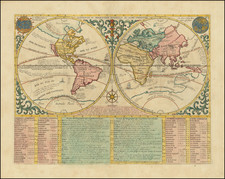
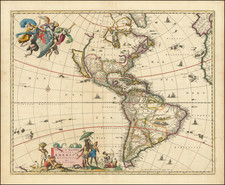
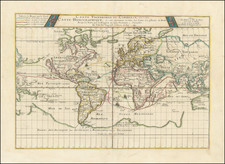
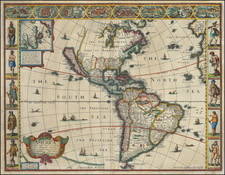
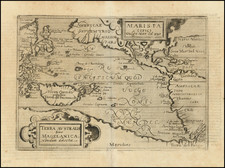
![[The 5 Californias] Carte de la Californie Suivant 1. La Carte manuscrite de l'Amerique de Mathieu Neron Pecci olen dressee a Florence en 1604, 2. Sanson 1656 . . .](https://storage.googleapis.com/raremaps/img/small/97983.jpg)